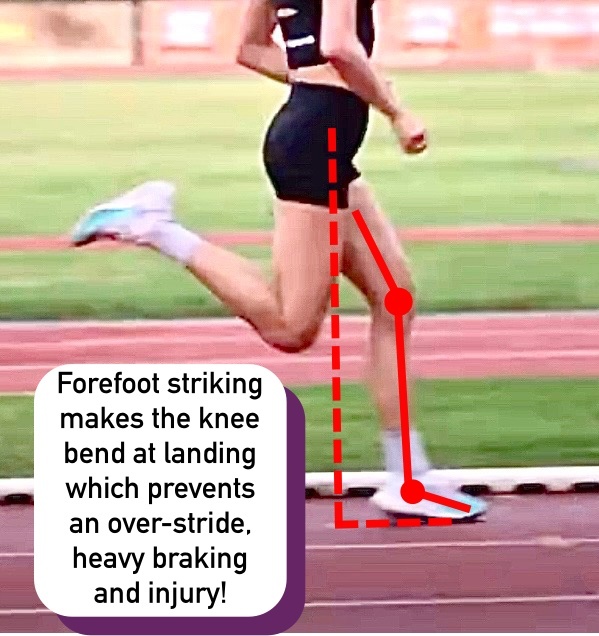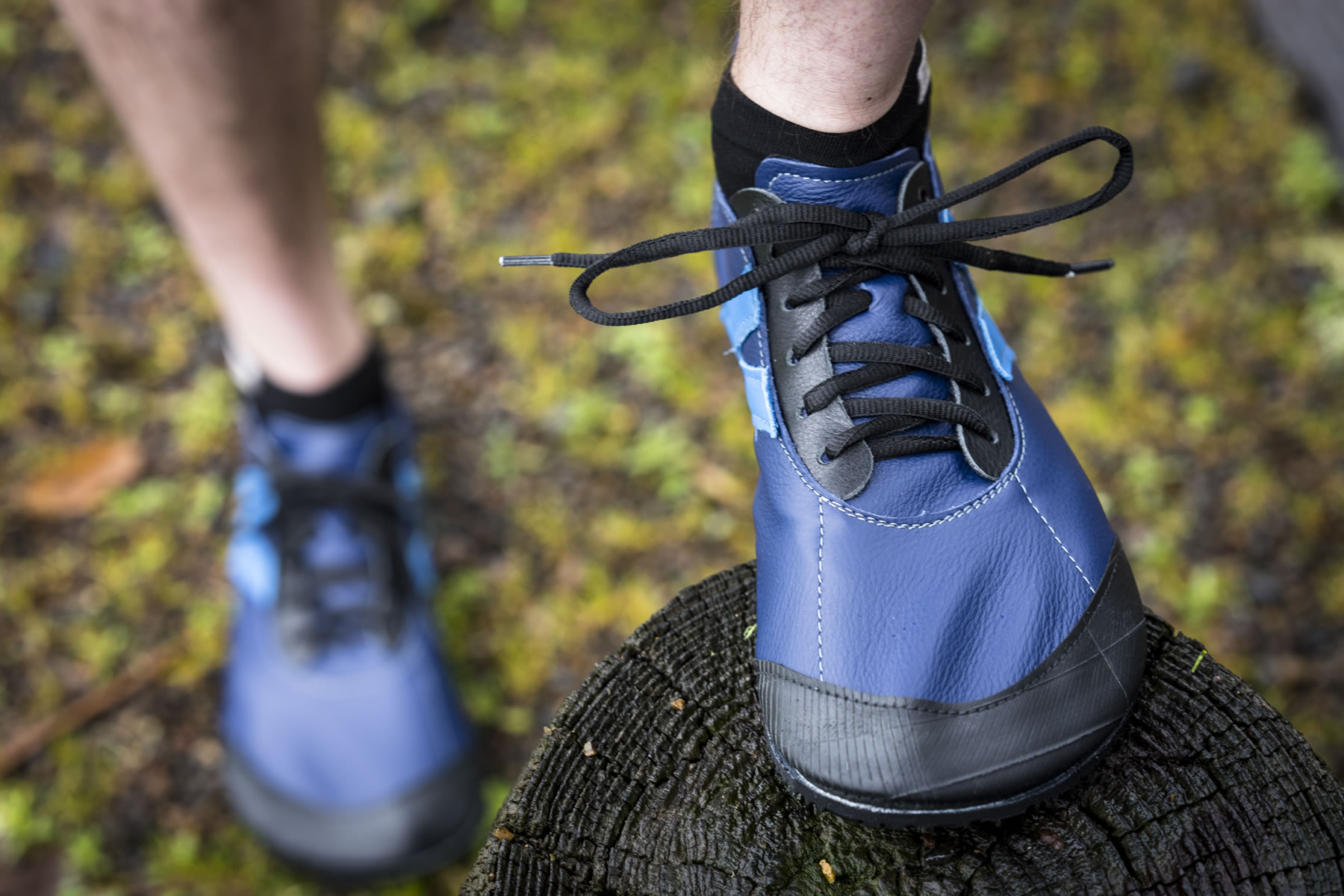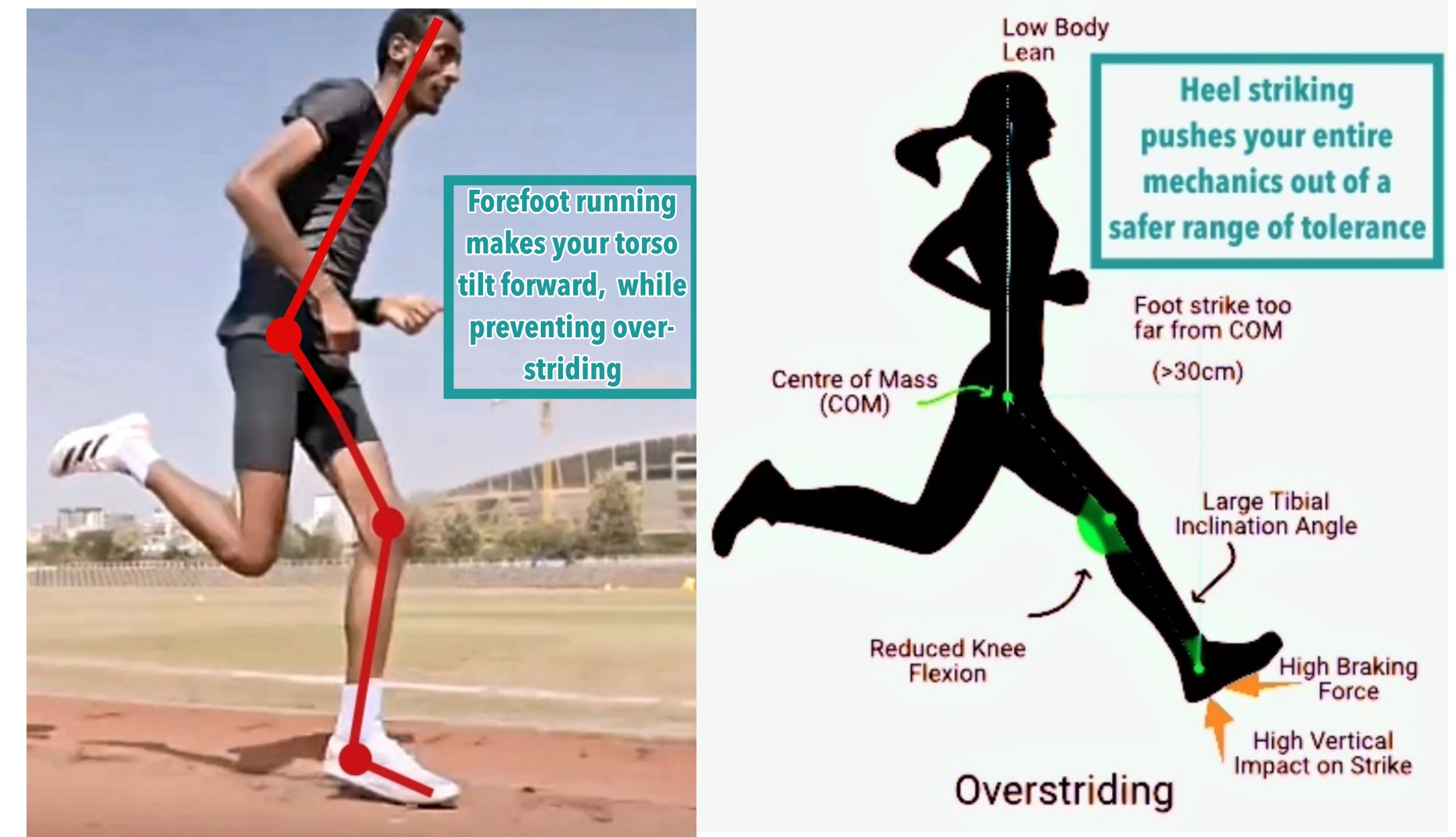When it comes to fully protecting your knees long-term in running, landing with a forefoot strike is the proven way the foot can best interact on the ground because it produces lower impact collisions by automatically engaging a shorter stride, higher cadence and more controlled pronation (better foot step stability), all of which are mechanical outputs that help un-stress the knee the most as compared with heel strike running.


Even better, foot strike pattern changes the direction or orientation of your upper body posture whereby forefoot striking reduces knee joint loads by enabling the upper body to maintain a slight forward lean, whereas landing heel-first when running pushes the upper body back to an excessive degree, shown below:
How you position your upper body when you run can either place or remove constant stress from your knees. Even if you are a light-weight, our upper body weighs over half of our body’s weight (Santos et al. 2016). This is why positioning your trunk the wrong way when running adds way too much weight on the knees, which can double knee-joint stress.
Of major significance, landing forefoot-first actually makes it easier for your trunk to flex (flexion meaning the act of bending a limb) in the forward position whereby a slight forward lean with your trunk decreases knee extensor moments. This means that when the trunk is positioned slightly forward when running, the knee muscles are less likely to stretch out and the knee-joint is less likely to unbend and lockout (like it does in heel strike running).
Research (references below article) also shows that patellofemoral joint forces are lower during running when the trunk leans forward because ground reaction forces shift forward which in turn, decreases knee extensor moments (Teng et al. 2014; Powers, 2010).
When you run, your entire upper body posture is relevant to your knee-joint health. It’s a myth that running takes a toll on your knees. Thanks to Born to Run, a new way of thinking about running blurs the long-standing notion that running is dangerous. The logical approach to safe running is to modify your biomechanics that favour forward momentum, this includes leaning forward by forefoot striking, not leaning backward by heel striking.
Last but not least, its not just the knees that forefoot running does a better job at fully safeguarding vs heel strike running, forefoot running was also found to prevent damage to the lower back that is otherwise caused by heel strike running! Read more on that here!
Also, more experts are writing up new findings indicating that heel strike running is the worst way to run! Here’s over 30 reasons why heel strike running is NOT the proper way to run!
If you’ve enjoyed my blog post, you’ll love my content at my YouTube channel, here, where I show why forefoot running works better than heel strike running!

References:
Powers CM. The influence of abnormal hip mechanics on knee injury: a biomechanical perspective. J Orthop Sports Phys Ther 2010; 40: 42–51
Santos et al. The Effects of Forefoot Striking, Increasing Step Rate, and Forward Trunk Lean Running on Trunk and Lower Limb Kinematics and Comfort. Int J Sports Med, 2016;37:369-373.
Teng HL, Powers CM. Sagittal plane trunk posture influences patellofemoral joint stress during running. J Orthop Sports Phys Ther 2014; 44: 785–792

Bretta Riches
BSc Neurobiology; MSc Biomechanics candidate, ultra minimalist runner & founder of RunForefoot. I was a heel striker, always injured. I was inspired by the great Tirunesh Dibaba to try forefoot running. Now, I'm injury free. This is why I launched Run Forefoot, to advocate the health & performance benefits of forefoot running and to raise awareness on the dangers of heel striking, because the world needs to know.
Latest posts by Bretta Riches (see all)
- Can You Run In Barefoot Shoes? Yes, But DON’T Heel Strike! - 21/07/2024
- Why Cushioned Running Shoes Are Really Bad for Your Feet - 19/07/2024
- Do Cushioned Running Shoes Cause Injuries? - 17/07/2024

